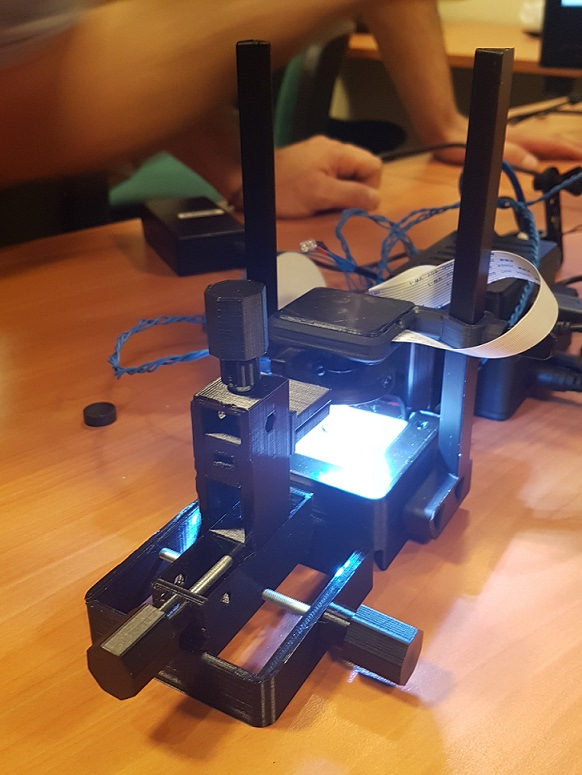
Without hardware there is no science. Equipment, reagents and consumables are all paramount for the execution of experiments, collection of new data and generation of new knowledge. Coupled with the movement for open science, many groups and initiatives are pushing to make Open Science Hardware the new norm in labs worldwide. We interviewed one of the founders of one such initiative, Prometheus Science, that is working to develop easily accessible and usable open science hardware starting from published academic research.
Can you introduce yourself and tell me what are Prometheus‘ goals as a company?
I am André Maia Chagas and I have been with Prometheus since the first tinkering phases. I work on this project with Dr. Maira Bertolessi. Together, we aim to increase the availability of science and education tools by creating affordable, open-source, scientific-grade equipment. We are heavily involved in the open-source and do-it-yourself movements. We are proud to say that our product, the FlyPi, can now be found across the world in more than 10 countries, such as Chile, Argentina, Nigeria, USA, Sweden, France and Germany.

You mentioned the FlyPi, what is that?
The FlyPi is our ‘proof of principle’ product, started as a collaboration with the NGO Trend in Africa. It is an open-source compact modular imaging system built out of 3D-printable parts and off-the-shelf electronic components. It is highly modular, so it can be adapted to unique experimental conditions. We have published work demonstrating that the FlyPi can be used for diagnostics and state-of-the art methods in neuroscience, such as optogenetics, calcium imaging, behavioural tracking and fluorescence imaging. As far as the price goes, even after building all the modules, it is still 10−20 times cheaper than traditional systems.
Tell me more about the open-source movement.
Well, the open-source movement started a while ago, mainly with software. The basic idea is that all plans/blueprints describing a piece of software, a protocol, a recipe or a piece of laboratory equipment are made freely available for people to comment, share, modify, improve and customize. This leads to the creation of communities where everyone can build off each other’s ideas and creations. We have held workshops in various countries in Europe and Africa to teach people how to build and use the FlyPi. We also focus on showing people how to use the available open-source technology out there to build their own scientific equipment. It has been an inspiring experience to see how access to a dynamic and powerful new tool like the FlyPi can transform a community and inspire a group of young scientists. We believe that by empowering people with these scientific tools we can increase access to science education and improve the way research is done. For example, we now have an online forum consisting of people from around the world who are develop tools to improve upon the FlyPi’s design.
Can you tell us about what your plans are now?
Of course. There are a lot of published scientific papers describing new open-source equipment, but normally the researchers who publish the articles are not interested in bringing the tools to a wider market. This is due mostly to the large time commitment and to the fact that academics’ main concern is to do more research. This is a problem, since many people do not have the necessary skills to build these tools from the original blueprints, or have time to spend doing so. This is what we at Prometheus want to do next. We aim to identify interesting open-source equipment described in the literature and to work with the researchers to find a way to bring their designs to market. Researchers interested in bringing their designs to a wider audience can contact us directly at andre[at]prometheus-science.com.
Where can we learn how to get involved with Prometheus?
You can find us at prometheus-science.com and we welcome conversations with open arms on our forum. Come check us out!
Michael Paolillo is a PhD student in Biochemistry and Neuroscience in Tübingen, Germany and he is passionate about science communication. He also created the website Neuromag.net, a science communications website that accepts interesting articles about science around the world.



Please sign in or register for FREE
If you are a registered user on Research Communities by Springer Nature, please sign in